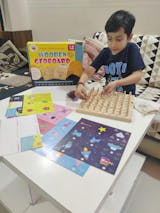Understanding and Supporting Your Highly Sensitive Child: A Guide for Parents
As parents, we want to provide the best environment for our children to grow and thrive. If you have a highly sensitive child, you might find that their needs are a bit different from other children. Understanding and supporting them can be challenging, but it can also be incredibly rewarding. Highly sensitive children experience the world with greater intensity, and with the right approach, they can flourish beautifully. We will explore key signs of high sensitivity in young children and offer practical, research-backed strategies to help you support your little one.
What Does It Mean to Be Highly Sensitive?
According to Dr. Elaine Aron, a leading researcher in the field, highly sensitive children (HSCs) possess a trait known as sensory-processing sensitivity. This means they are more acutely aware of subtleties in their environment and tend to process information more deeply. As a result, they might react strongly to sensory input, changes in routine, and emotional experiences.
Key Signs Your Child Might Be Highly Sensitive
1. Strong Reactions to Sensory Stimuli
Example: Your child might cover their ears at the sound of a loud vacuum cleaner or cry when they feel uncomfortable textures.
Solution: Create a sensory-friendly environment at home. Use soft lighting, gentle sounds, and comfortable clothing. Introduce sensory textures in a safe and controlled manner.
2. Intense Emotional Responses to Positive and Negative Events
Example: Your child may react with extreme joy over a small surprise, like a new toy, but may also feel deeply upset by minor disappointments, such as not getting their favorite snack.
Solution: Acknowledge their feelings without judgment. Validate their emotions by saying things like, "I see that you're really happy about your new toy!" or "I understand that you're upset because you didn't get your favorite snack." Encourage them to express their feelings through art, storytelling, or sensory play- by squeezing play dough or tightly holding rice in hands.
3. Strong Reactions to Changes
Example: Even minor changes in routine, like a different route to school, can cause distress.
Solution: Prepare your child for changes in advance. Use visual schedules or storyboards to explain what will happen. Gradually introduce changes to help them adapt. Keep a sensory activity ready once the child gets back from school - it could be playing with sensory play dirt or running hands through sensory rice etc.
4. Need for a Calm and Quiet Environment
Example: After a busy day at a noisy park, your child might become irritable or withdrawn.
Solution: Create a quiet, safe space at home where your child can retreat to recharge. Fill this space with calming activities like reading, drawing, or playing with sensory-friendly toys such as Lattooland's sensory balls, texture based paints, wooden tools set. Regular quiet time can help your child balance their sensory and emotional experiences.
5. Physical Symptoms from Overstimulation
Example: Your child might experience headaches, stomachaches, or fatigue after a day filled with sensory input.
Solution: Recognize the signs of overstimulation early and intervene. Encourage regular breaks and provide activities that help them relax, like gentle yoga, deep breathing exercises, or playing with calming sensory materials. Ensure they have a consistent routine, especially at bedtime, to promote better sleep.
Practical Strategies for Supporting Highly Sensitive Children
1. Educate Yourself and Others Understanding the science behind sensory-processing sensitivity can help you and others better support your child. Share resources with teachers, caregivers, and family members to create a supportive network.
2. Emphasize Strengths Highly sensitive children often possess remarkable empathy, creativity, and insight. Celebrate these strengths and encourage activities that allow them to shine. Arts and crafts, sensory play, nature exploration, and imaginative play can be particularly rewarding.
3. Use Positive Discipline Instead of punitive measures, use positive discipline strategies that guide and teach. Set clear expectations and use gentle reminders. Reward positive behavior with praise and small rewards.
4. Foster Resilience Help your child develop coping strategies to manage their sensitivity. Teach them deep breathing exercises, mindfulness techniques, and problem-solving skills. Encourage them to face challenges with your support, gradually building their confidence.
5. Create Meaningful Routines Consistent routines provide a sense of security for highly sensitive children. Maintain regular schedules for meals, playtime, and bedtime. Use visual aids to help your child anticipate daily activities and transitions.
Conclusion
Raising a highly sensitive child comes with its unique set of challenges, but with understanding and empathy, you can help your child navigate the world with confidence and joy. At Lattooland, we are committed to providing sensory-friendly toys and materials that support the development and well-being of highly sensitive children. Explore our range of products designed to soothe and engage your child, helping them thrive in a world that often feels overwhelming.
Remember, being highly sensitive is a gift. Celebrate your child's unique perspective and enjoy the journey of growth and discovery together. For more tips and resources, visit Lattooland.com and follow us on Instagram @Lattooland, @lattooland.us.
















